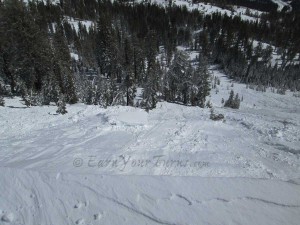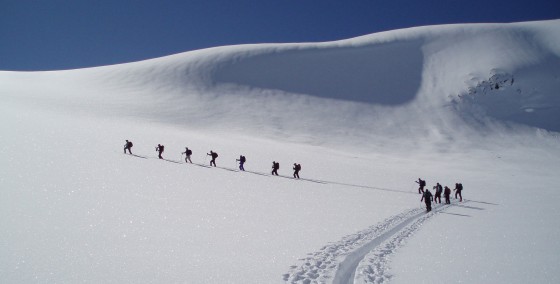When I look at all of the effort, research hours, and costs that have been invested in avalanche safety, I am frustrated that people are still dying out there each winter; even some of the best — like Robson Gmoser. The fact is that even the best in the game need to play it safer somehow.
Physical Factors
One can argue that the mountains are inherently dangerous, and that would be true. However this argument only serves us in accepting the risk before a tragedy strikes, and is never to be used as an excuse after. Why? Because it inhibits the potential for learning: to hide behind thae statement after the fatally wounded are dug out in effect stunts our growth.
Human Factors
Ian McCammon’s work with Heuristic traps is helpful: the idea that we are guided by “rules of thumb” or unconscious ways of being, like familiarity. As if a past experience will predict a future one. Or by seeking acceptance from others socially, yet not sharing what we know to be true for ourselves. These are also a great step forward toward the idea that our decisions are in some way flawed, and this is true. I propose, however, that we go even deeper.
From my own experience I have discerned that the problem is not one that can be solved entirely through technology or new techniques or anything external to ourselves, like a ‘trap‘. Certainly, tools and knowledge give us more leverage, and the efforts of scientists, engineers, and researchers have been valuable and have saved lives. I would posit that the real issue is less about tools and techniques, and more of an intrinsic personal challenge. Like keen martial artists we need to study our hearts, because who we are as individuals and how we act and react is a key part of the equation.
Innate Character Factors
The idea is that the largest part of the avalanche problem is our own character flaws. This may be frightening to most. Maybe we think human error is beyond our capacity to observe clearly and treat with any level of accuracy; that we have to be a certified psychologist to delve into that territory, which is beyond our capacity to manage in day-to-day operations. But I am certain that this is not the case. Frankly, we are afraid; terrified of looking closely at our internally motivated behaviour for the answer.
In “Transforming Your Dragons” Dr. Jose Stevens lays out seven archetypes that humans can be afflicted with. These can that I see negatively adversely affecting our decision-making capabilities in high-risk environments, like skiing in avalanche terrain. His work offers a powerful tool for putting a language to human factors in a way that we can easily identify with, if not fully admit to. Dr. Stevens calls them “Dragons.”
In his book, Dr. Stevens explains how each of us is particularly plagued by one of these seven dragons and they surface, or gain control, in the presence of fear. However, it is also important to keep all of them in our awareness. Let’s take a closer look at each one of these and see how they can play out in the backcountry skiing paradigm.
- Arrogance
- Self-Deprecation
- Impatience
- Martyrdom (11/27/15)
- Greed (11/29/15)
- Self-Destruction (12/1/15)
- Stubbornness (12/4/15)
Editor’s Note: Detailed explanations of the Dragons listed above will be published on the dates indicated. For expediency of thought, we jump to Ken’s conclusion.
Arrogance, self-deprecation, impatience, martyrdom, greed, self-destruction, and stubbornness are all fueled by fear. Respectively the fear; of being found out as being not as good as we claim, our own self-efficacy, not enough time, taking personal responsibility for our actions, not having enough, being happy and healthy, and of being wrong. These are all a hazard to the backcountry skier, or to a human being traversing through life. I think I have been gripped by all of these dragons at one time or another. However, mostly I have tripped on being a victim to others: martyrdom. Now it is all in awareness, which is all I can do to remedy the fear that fuels the dragon.
Love conquers the fear that fuels the dragons. It nurtures the opposites: meekness, self-approval, composure, contentment, generosity, self-creation, and flexibility. There is a place for fear in the backcountry skiing game. Fear keeps us on our toes and brings focus to hazardous situations — but that is all the credence we should lend to fear. As far as improving ourselves in the game of backcountry skiing, the easy thing to do is point out other people’s dragons; the real task is to know our own. That is the birth-place of courage and self-knowledge. That is where we will make a leap forward in terms of fewer tragedies; when we become conscious of our behaviour out there. All of life seeks this very evolution: the evolution of consciousness.
© 2015



Recent Comments